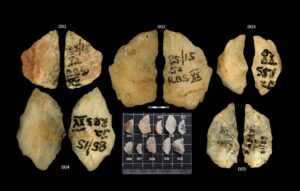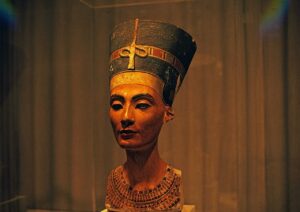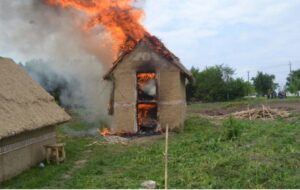Archaeologists have uncovered eight hidden chambers in the pyramid of Sahure, south of Giza in Egypt.
British Egyptologist John Perring originally excavated Sahure in 1836. He came across a debris-filled passageway but was unable to clear it. He was sure the passage led to more chambers. Almost 200 years later, his prediction has proven accurate.
Susceptible to collapse
The now crumbling pyramid was built from the 25th to the 26th century BC for the Pharaoh Sahure (also known as Sahura) of the Fifth Dynasty.
Sections of the pyramid have been crumbling. Researchers think this is partly because of the construction style but also because of the high humidity and strong winds in the region. The sand, limestone, and rubble at the core of the pyramid may have made it more susceptible to collapse. The debris from this deterioration made it impossible to explore the other end of the passage, until now.

From left to right: An exterior view of the pyramid; a passage secured with steel beams; and one of the discovered storage rooms. Photo: Mohamed Khaled/Uni Würzburg
The Egyptian-German research team, led by Mohamed Ismail Khaled, started work to conserve the pyramid in 2019. They cleared out interior sections and replaced damaged walls with retaining walls. They are the first team to successfully access the pyramid’s burial chamber.
The team came across the blocked passageway noted by Perring two centuries ago. Perring believed that it led to storage rooms, and Khaled’s team proved he was correct. They found eight badly damaged chambers.
“We were jumping from happiness [because] we have achieved something that no one [had] done before,” Khaled told Mens Journal.

The Pyramid of Sahure. Photo: Shutterstock
Laser mapping the past
The team is using light detection and ranging (lidar) to see what lies beyond blocked sections of the pyramid and to 3D map the structure. The lidar uses pulsing lasers to penetrate obstacles and show what sits on the other side.
There are still remnants of the original ceilings and floors in the newly discovered chambers. The team thinks the rooms, also known as magazines, were built to hold funerary furniture.
“Unfortunately, we did not find anything inside, but one can imagine that King Sahura had more treasures than King Tutankhamun. The state under Sahura’s reign had a very strong economic situation,” Khaled said.
The team continues its work on the pyramid. In the future, they think there is potential to open it to the public.






